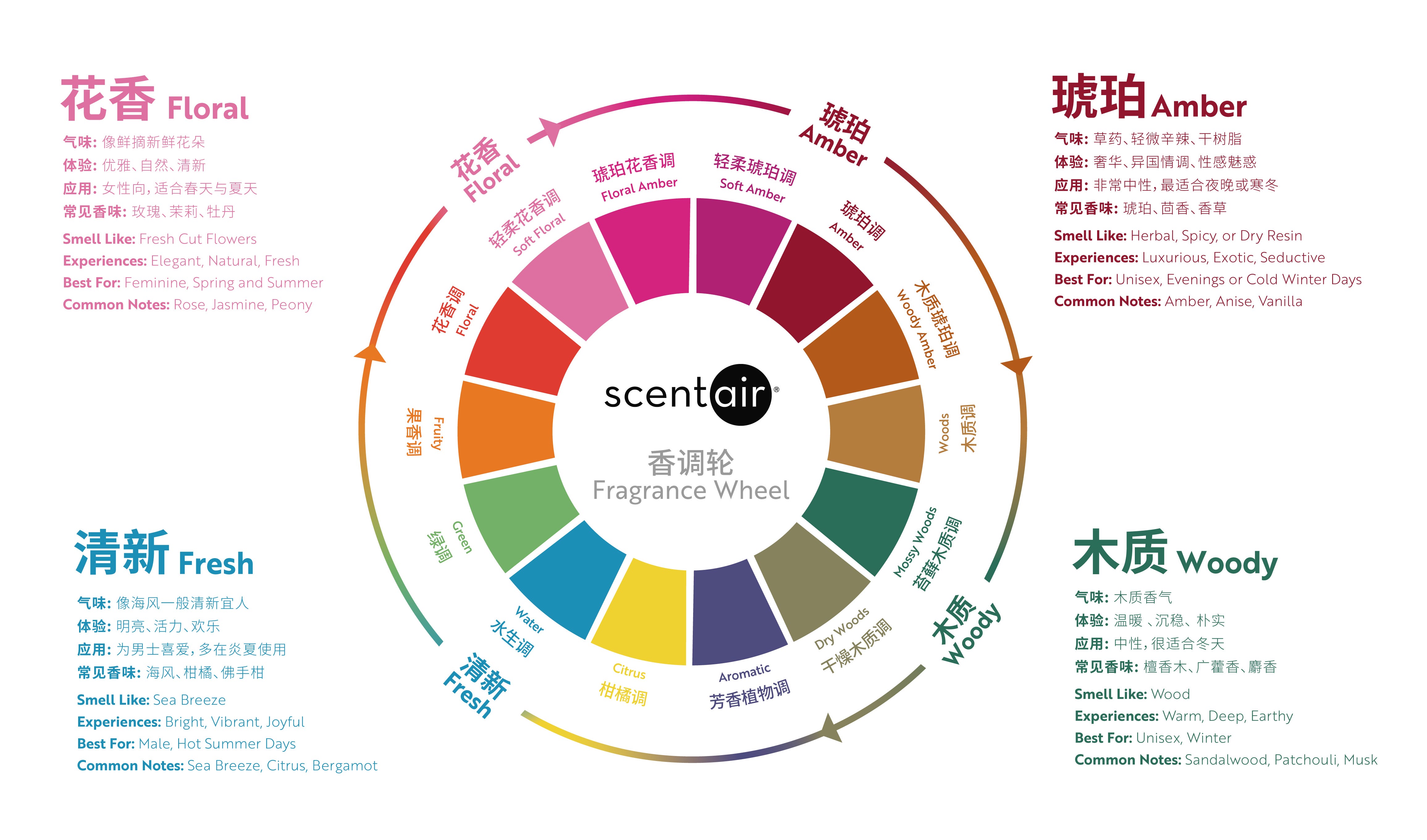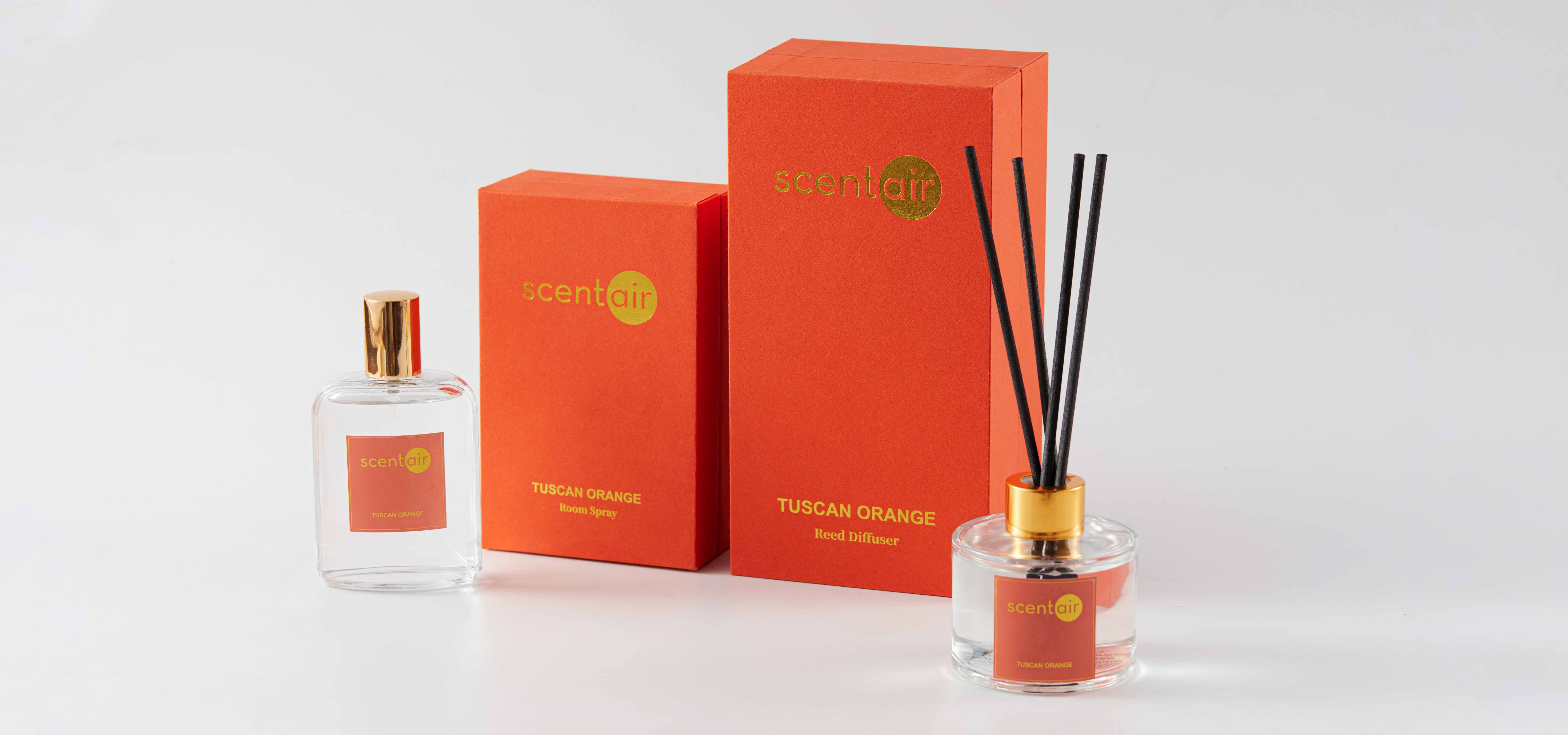Every detail counts. The importance of the color of a fragrance product and its design can never be overstated. More than an aesthetic decision, the choice of color communicates to the customer about the scent, the product and even the brand itself, with the ability to influence customers’ purchase decisions. Similarly, the choice of fragrance notes in perfumery, much like colors in painting, will give different personalities and layers to the final creation. Colors and fragrances echo each other.
The Intertwined Relationship Between Color and Scent
Color affects brain waves and stimulates various emotions. The study of how different colors affect human mood and behavior is called color psychology. It is generally believed that red symbolizes an open, direct and energetic personality; yellow represents optimism and a strong self-management ability; orange, having the merits of both red and yellow, tends to be passionate, positive, efficient, and open-minded; green is open, friendly, and wants the feeling of security and belonging; blue is indirect, rigorous, and a thinker who takes a systematic approach to problem solving.


Similarly, scents have the remarkable ability to evoke memories and emotions. The fragrance wheel below, comprising of four main categories, provides an easy way for us to understand the various emotions associated with scents. The floral scent family is elegant, pleasant, and usually takes on a feminine characteristic in fragrance.; the fresh scent family encompasses clean bright scents, giving people a vibrant impression; the wood scent family includes scents that are warm and opulent, is rich and long-lasting, can be described as calm and deep, with a sense of classical and mysterious; the amber scent family provides warmth, sensuality and sophistication to a fragrance, and is often described as exotic and alluring.


In today’s world where people's expectation for multi-sensory experiences continue to rise, the ties between color and scent have become more intertwined than we can imagine.
The Use of Color and Scent in Marketing
Color psychology has long been a powerful marketing tool being applied by major brands on their products. Packaging is as important as the content it contains, and color plays such a big part in it. In perfumery, the color of packaging can even influence fragrance perception. Well-chosen colors in packaging design can complement the scent from within, letting customers anticipate the scent even before they smell it. With this knowledge, brands are able to create a fragrance product in which the scent and color echo each other in perfect harmony to deliver a stronger multi-sensory impact to the customers.
ScentAir's Tuscan Orange Reed Diffuser is a great example. The design is a harmonious blend of simplicity and classy, appealing to those who appreciate both aesthetics and functionality. The bottle is crafted from high-quality glass with clean lines and a minimalist shape, with a shiny golden lid adding a touch of luxury. A sensory connection is built between the packaging and the fragrance. The orange-colored packaging conveys a sense of warmth, energy and creativity, evoking the essence of the fragrance within. Altogether, the product features a synesthetic design involving a multisensory experience that goes beyond the sense of smell.


Once we are equipped with the knowledge about the interplay between color and scent, we can throw the brand message into the mix, and having these three elements work together to create a synesthetic experience.
Color and Scent Branding Requires Thoughtful Planning and Management
Choosing the right colors and scents can define your brand’s value, and strengthen your brand positioning, helping your brand stand out from the rivals. Color can lift our visual experiences, while scent allows for richer exploration of hues. However, it is worth noting that applying color and scent to brand marketing requires well thought planning to ensure your choices truly meet the preferences and perceptions of your target audience. It is also possible that some of your segments are allergic to certain scents or react negatively to certain colors.
Most importantly, color and scent are only part of the branding equation. They need to be consistent with your brand's core values to support or even strengthen the brand story, thereby communicating a trustworthy and lovable brand image to the customers. To do that, you would need a scent marketing partner who possesses all-round fragrance knowledge and understands your brand strategy. ScentAir's brand immersion process unpacks your brand identity by analyzing four key brand components - aesthetics, decor, brand purpose, and key customers - to help you plan your scent marketing strategy and ensure that your signature scent is aligned with your brand's core values and will make the greatest impact on your business.
Contact us today to start planning your scent marketing strategy!





